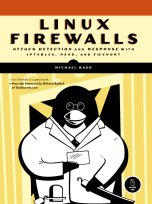OSCON 2007 Talk on iptables Visualization
15 April, 2007
 At the O'Reilly Open Source Convention
of 2007 (July 23-27, Portland, Oregon) I will give a
talk
about visualizing iptables log data. Here is the talk abstract:
At the O'Reilly Open Source Convention
of 2007 (July 23-27, Portland, Oregon) I will give a
talk
about visualizing iptables log data. Here is the talk abstract:
 The iptables logging format provided by the Netfilter project contains a wealth
of detailed information about network traffic. Nearly every interesting field
in the network and transport layer headers is logged by iptables. By combining
the graphing capabilities of AfterGlow
with the attack detection capabilities of psad
it is possible to render eye-catching graphical visualizations of network attacks.
These visualizations can expose important relationships between attackers and their
targets that are difficult to acquire in via non-graphical means. This talk will
analyze iptables log data from two sources: the Honeynet Project, and from an
Internet-facing Linux system. This data contains instances of the Nachi and
Slammer worms, and suspicious outbound SSH and IRC connections from compromised
systems. In addition, material from the book "Linux Firewalls: Attack Detection
and Response" will be presented to show you how to deploy psad on a live firewall.
As more people run Linux, mountains of iptables log data are piling up. It is time
to maximize the effectiveness of this data and mine it for suspicious traffic and
network-based attacks. This talk will show you how.
The iptables logging format provided by the Netfilter project contains a wealth
of detailed information about network traffic. Nearly every interesting field
in the network and transport layer headers is logged by iptables. By combining
the graphing capabilities of AfterGlow
with the attack detection capabilities of psad
it is possible to render eye-catching graphical visualizations of network attacks.
These visualizations can expose important relationships between attackers and their
targets that are difficult to acquire in via non-graphical means. This talk will
analyze iptables log data from two sources: the Honeynet Project, and from an
Internet-facing Linux system. This data contains instances of the Nachi and
Slammer worms, and suspicious outbound SSH and IRC connections from compromised
systems. In addition, material from the book "Linux Firewalls: Attack Detection
and Response" will be presented to show you how to deploy psad on a live firewall.
As more people run Linux, mountains of iptables log data are piling up. It is time
to maximize the effectiveness of this data and mine it for suspicious traffic and
network-based attacks. This talk will show you how.




